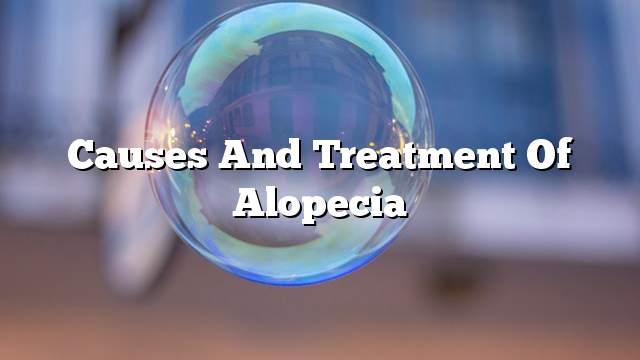Alopecia
Alopecia is a disease that affects hair, causing it to fall, and can be in the scalp, or in the chin or eyebrows, or eyelashes, and take the affected area circular shape, or oval, and often the age of the patient ranging from ten to forty years, Men more.
Causes of alopecia
There are a number of causes attributed to the infection of alopecia:
- Autoimmune disease, so that the body attacks hair follicles, hair falls.
- Fungal infections, by wearing caps, scarves of a particular type of fungus, using contaminated hair combs, or touching pets, especially cats and dogs.
- Genetic factors, but the effect of this factor has not yet been demonstrated.
- Exposure to stress and stress for a period of time.
- Skin diseases such as eczema.
- Thyroid disorders.
- Vitiligo.
Treatment of alopecia
There are many treatments used for hair growth in the area of alopecia, including:
Natural remedies
Natural ingredients can be used to treat alopecia, such as:
- Radish juice: cut off the head of the radish, and massage the affected area.
- Apple vinegar and garlic: Take a cup of apple cider vinegar, add a head of chopped garlic, and cover the mixture with a piece of gauze clean, and leave for ten days, and then used on the affected areas, using a ball of cotton.
- Onion juice: A head of onions is poured, taken from the water, and placed on the affected area.
- Garlic, salt and flour: take equal amounts of garlic, salt, and sesame paste, then massage the affected area with a cloth, and the mixture is separated, three times a day.
- Castor Oil: Apply the affected area with pure castor oil twice a day.
- Egg yolk and turmeric powder: Mix egg thyme, with a little turmeric, and put on the affected area.
- Honey and mustard: Treat the affected area with honey, and then put a little mustard on it.
Pharmacological treatments
There are many drugs that treat alopecia, the most important of which are corticosteroids, which are available in various forms of medicine. The doctor may resort to injecting them under the skin, or prescribe for the patient ointments and solutions containing them or pills taken orally. However, injections are more effective, Where the hair goes back to growth about four weeks after the injection.
It is worth mentioning that in many cases the hair is to grow on its own, especially for those who have been affected by mental disorder, and can resort to hats, or hair removal in a way that hides baldness, in the area of injury until recovery.
